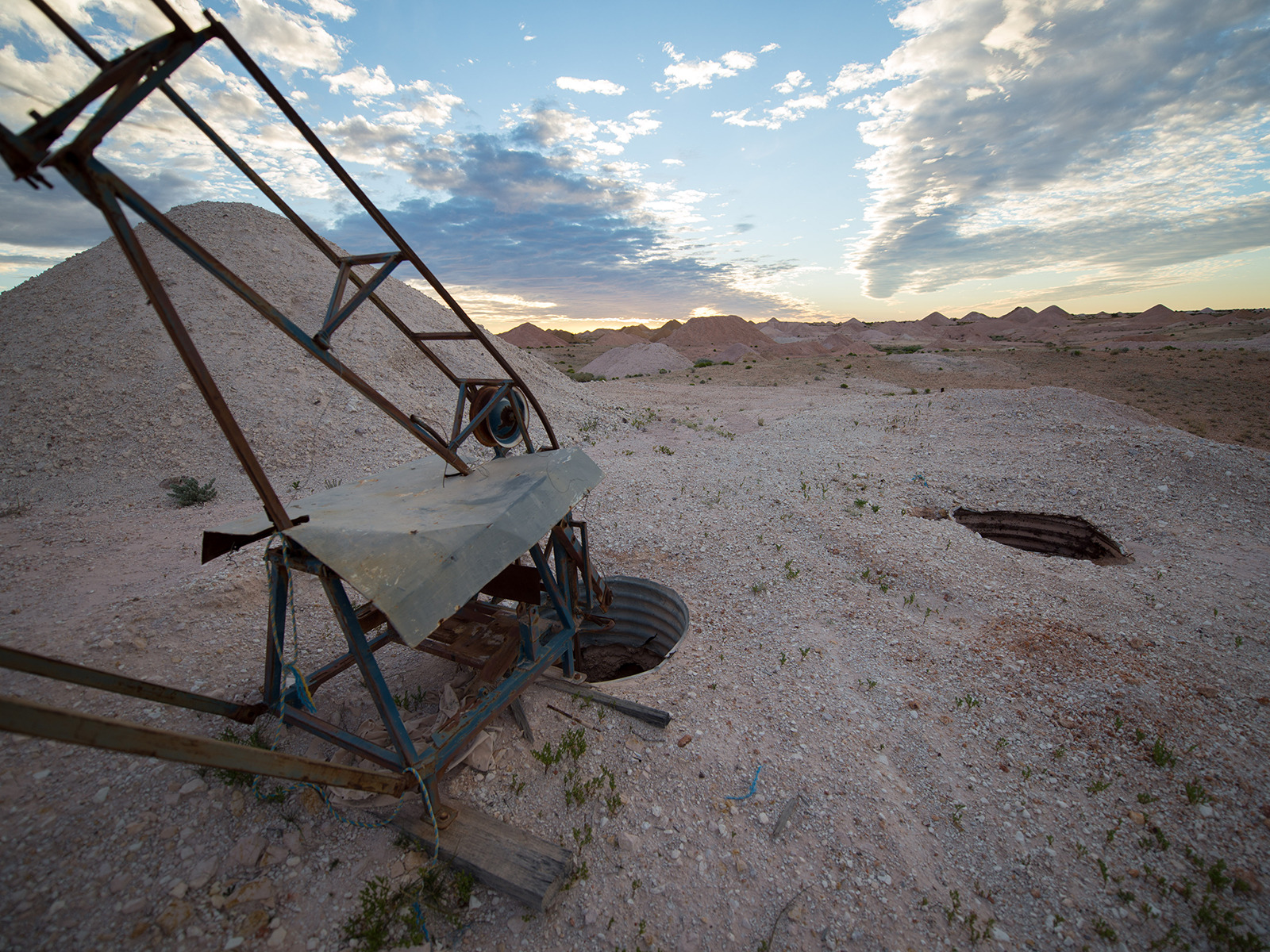The Opal Capital of the World
Coober Pedy is a legendary opal mining town in outback South Australia, 846 kilometres from the state capital, Adelaide.
Opal fever began in Coober Pedy on 1 February 1915 when a 14 year old boy Willi Hutchison, who was searching for gold with his father and some mates discovered the rare gemstone. At the end of World War One and with the completion of the Trans Continental Railway, the digging began in earnest. During the Great Depression, opal prices plummeted and the digging almost stopped. But, typical of Coober Pedy's history of boom and bust, an Aboriginal woman named Tottie Bryant made a sensational opal find at the Eight Mile field in 1946, starting a new rush to the fields.
In the 1960's, the mining industry exploded as many post-World War Two migrants from Europe came to seek their fortunes. Opal mining developed into a multi-million dollar industry and the town still supplies most of the world's gem-quality opal. Today, Coober Pedy community relies on tourism as much as mining. However, the mythical stone remains at the heart of the town and with over 70 opal fields it's still the largest opal mining area in the world.
The name Coober Pedy is derived from an Aboriginal phrase 'Kupa Piti' commonly assumed to mean 'white man in a hole.' This name came about both because of the miner's pits, and the miner's tendency to live in underground dugouts to escape the desert heat. Almost half of the population still lives underground and there are underground churches, bars, hotels and even an underground beautician. Over the last 100 years, Coober Pedy has evolved into one of the most unique places in Australia and perhaps the world. It's a cosmopolitan town with a population of 3,500 and over 45 different nationalities.
During our residency in Coober Pedy we created films and photos with residents in the town. We launched the films at the Coober Pedy drive in as part of the 2015 centenary of opal in Coober Pedy. The films and photo essays capture some of the diversity of people, work and life in the town.

